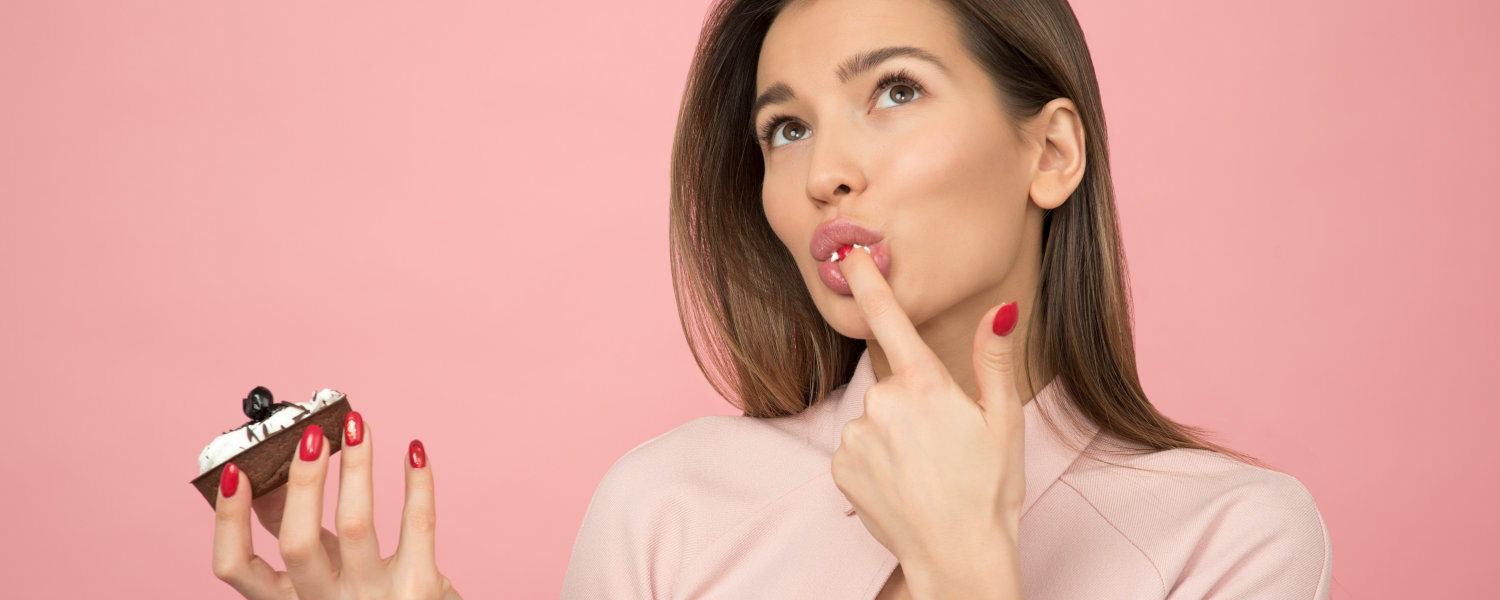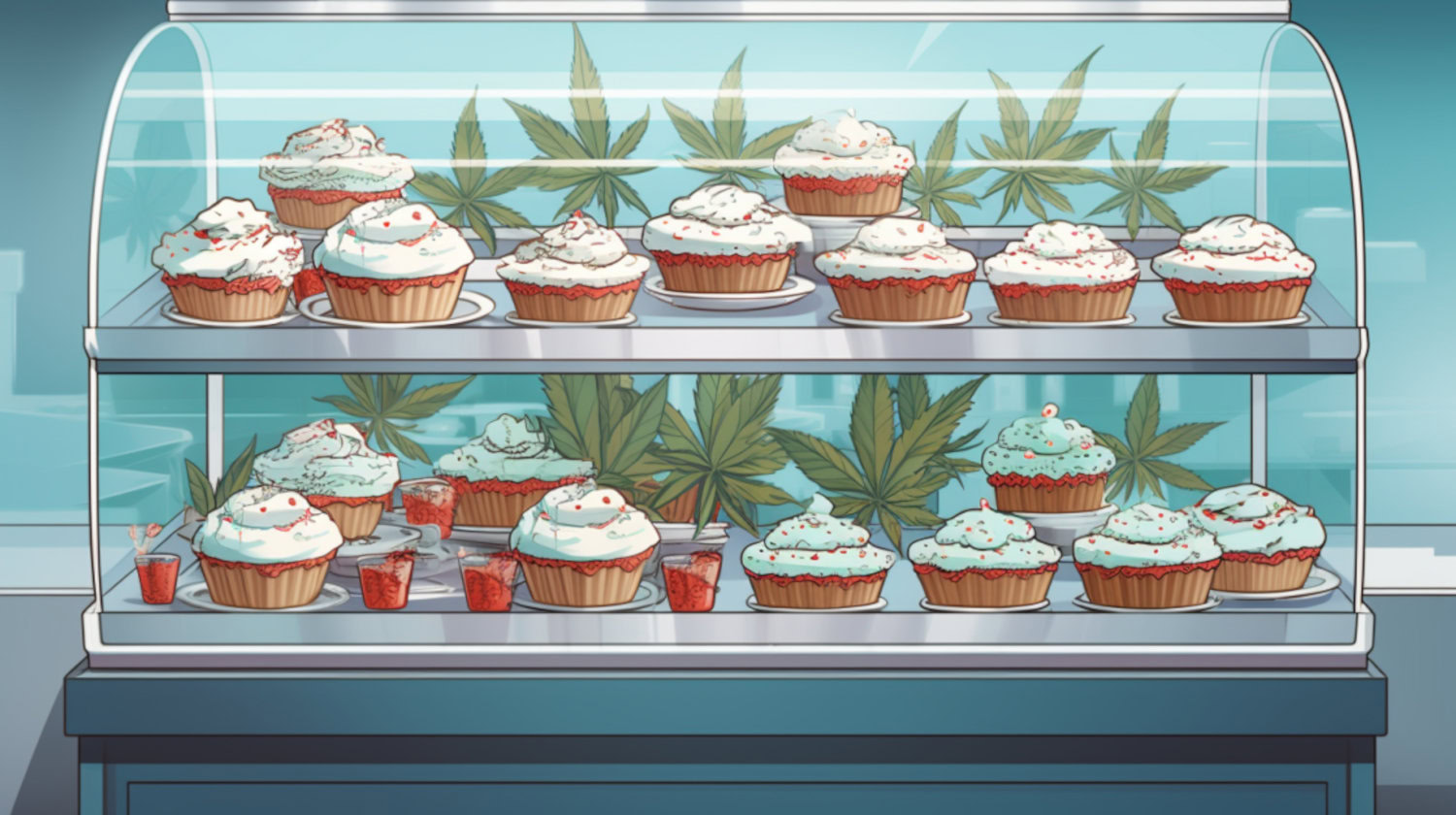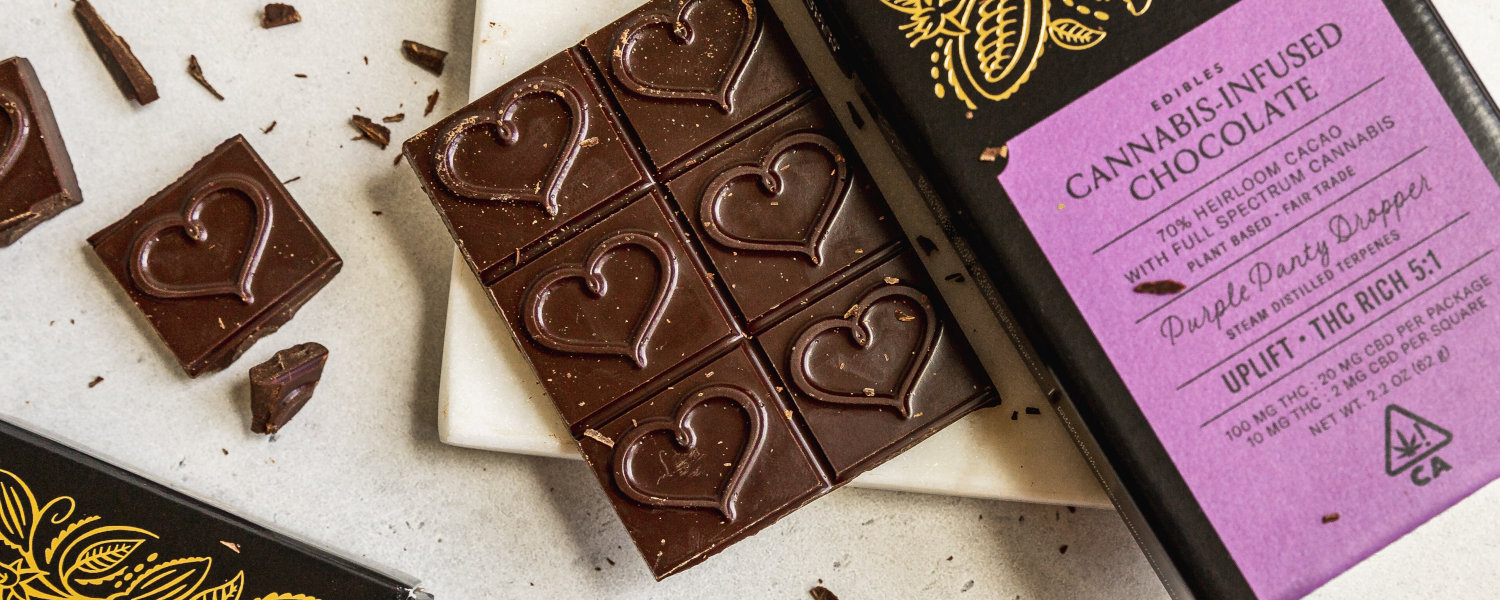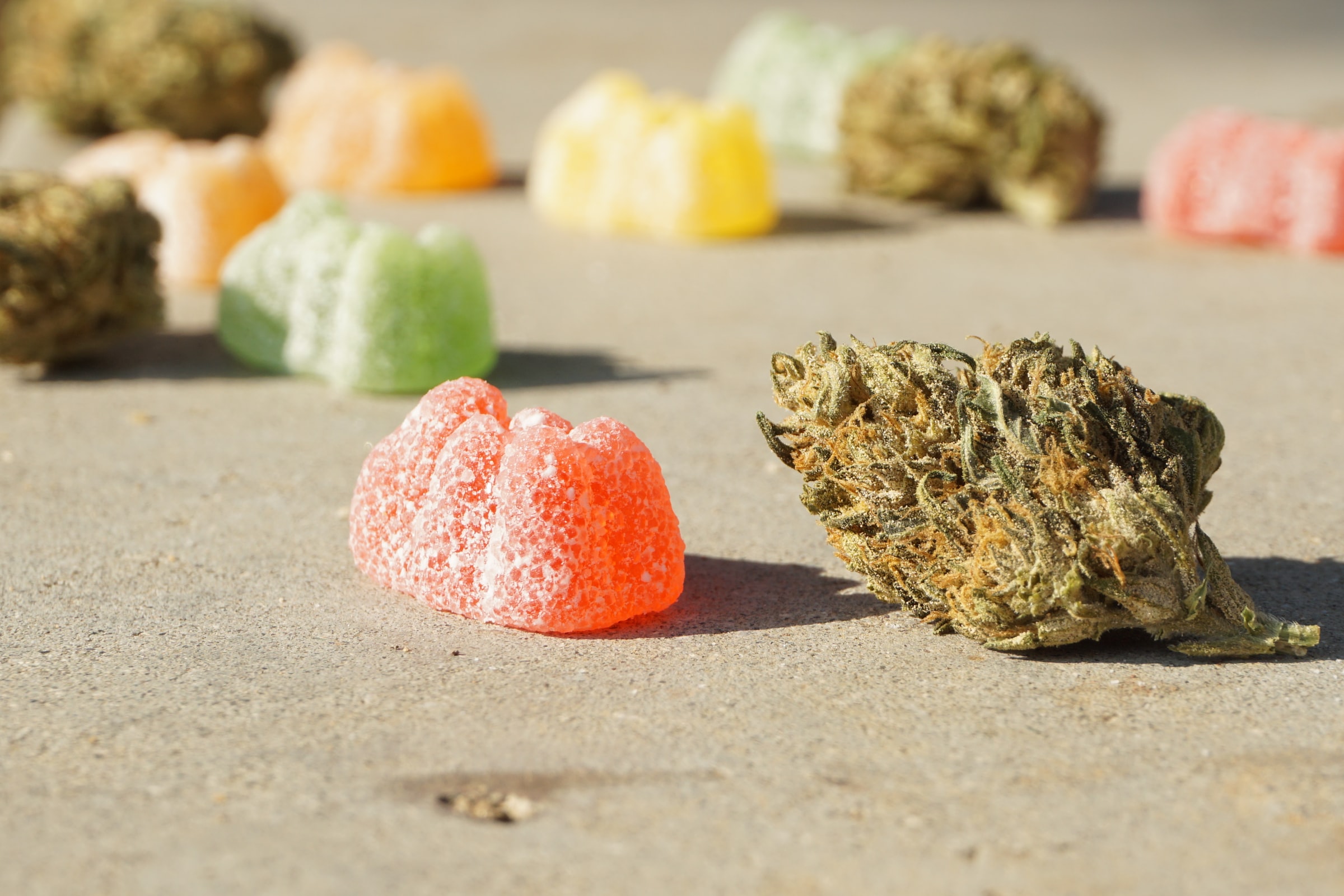Cannabis-infused edibles continue to be the most popular item in the legal market. The infused treats fly off the shelf because they provide customers with a wide range of options to fit their needs, along with portability, convenience, potency, and flavor.
Edibles are versatile and potentially potent by nature. They can be sweet treats, savory snacks, or refreshing beverages. More importantly, they can be infused with various cannabinoids in various dosages, from non-intoxicating low-dose CBD to high-dose, high-potency THC.
Cannabis edibles are consumed and metabolized through the digestive system. This process delivers different, often more intense effects than traditional smoking methods. So while edibles may appeal to beginners with their ease of use and discreet nature, users should be mindful of their dosage and effects.
In this article, we’ll provide an overview of helpful information about cannabis edibles, including the types, different dosages, and effects, as well as insight into how you can have a safe experience.
What are Edibles?

First, let's discuss what edibles are. Cannabis edibles are foods and beverages that have been infused with different cannabinoids (most often intoxicating THC or non-intoxicating CBD). Edibles purchased in dispensaries are usually infused with high-THC concentrates, like distillate, live resin, and rosin. Traditional or homemade edibles are made with infused ingredients like cannabutter or canna-sugar.
Cannabis is popularly consumed through smoking, like using a bong or pipe, rolling it into a joint, blunt, or pre-roll, or inhaling it through vapes. The chemical compounds of the plant – cannabinoids and terpenes – enter the bloodstream through the lungs and then reach the brain and other places in the body, where the endocannabinoid system functions to deliver intoxicating and therapeutic effects.
Edibles are processed in the body differently. After ingesting the edibles, the cannabinoids are absorbed through the stomach and liver. The process changes the chemical compound THC into 11-hydroxy-THC, which is theorized to be three times stronger, in effect, than THC.1
There are both benefits and drawbacks to consuming cannabis in edible form.
Benefits of Edibles
- Potency – For high tolerance users, especially medical ones, edibles deliver strong effects without having to smoke a lot of dry flower.
- Discreet – Smoke can create unwanted odors and draw attention to the session. Consumers can ingest edibles without others being aware of what they’re doing.
- Flavors – Depending on the state and the dispensary, users can typically find cannabis infusions in a variety of flavors and styles. They can be sweet, savory, sour, or refreshing.
- Variety of ratios – Edibles bought at a dispensary usually come in ranges from low-dose CBD or balanced ratios of cannabinoids to high-potency THC-rich options.
- Length of effects – Edible effects last anywhere from 2-6 hours, with some people experiencing effects into the next day.
- Precise Dosages – Store-bought edibles are dosed per serving, making it easy for consumers to know how much they are consuming. Homemade edibles are harder to get an accurate reading of precise dosage but can still be tailored to a dosage suitable to your needs.
- Less intimidating – Smoking can be overwhelming, especially for new consumers – the process of packing or rolling, inhaling, the look and smell of the smoke, and even the amount of time sitting and consuming can make the method of consumption intimidating. Edibles offer a more approachable experience.
- Price – You can find 100 mg edible packages in the store for as little as $12 (depending on the state). Making edibles at home can stretch your dollar even further.
Drawbacks of Edibles
- Potency – Edible effects may be too strong for users looking for a mild experience.
- Onset time – Since edibles process through the digestive system, it can take anywhere from 30 minutes to 2 hours to feel the effects.
- Length of Effects – The effects from edibles can last longer than smoking, and some users may not want to feel the effects for quite so long.
- Additive Ingredients – Edibles are made with other ingredients like sugars or artificial flavorings that may not be wanted or needed.
- Price – The cost of store-bought edibles can add up, especially for consumers who require more than 100mg or prefer a brand at a higher price point. Some packages of 100mg edibles can cost up to $50 (again, depending on the state).
- Shelf life – Since edibles are food-based items, they may not have a long shelf life compared to tinctures and other products.
Types of Cannabis-Infused Edibles
Edibles in today’s legal market come in a wide range of food items. Below we have listed some of the most common forms of infused cannabis.
Infused Foods

- Effects – The onset of these effects can take 30 minutes to 2 hours. Effects may last up to and beyond 6 hours, depending on experience level and dosage.
- Pros – Various discreet tasty options for a wide range of users, including high CBD, vegan, and gluten-free.
- Cons – Long onset time, extended duration of effects, added ingredients.
Gummies
These are some of the most popular edible items. They are soft, gummy treats, easy and quick to pop in your mouth and go about your business.
Chocolates
Edible candy bars are great for chocolate lovers. They are also an option that consumers can use to infuse other meals – think chocolate-covered berries or s’mores.
Baked Goods
Brownies, cookies, and rice crispy treat variations are some of the most traditional infused sweets. These are more of an indulgent option but a classic nonetheless.
Savory Snacks
Some dispensary menus now offer infused chips and popcorn. These options usually have low doses per chip, making it easy to get a little snack along with your desired dosage.
Infused Beverages

- Effects – Beverages have to be infused through a process referred to as nano-emulsification. THC is not naturally water soluble, so nano emulsification breaks down the THC into molecules small enough to infuse evenly throughout the liquid.
- Pros – Drinks have a faster onset time because of the nano emulsification process, often taking effect between 10-15 minutes. There's a range of flavors and effect options.
- Cons – The number of cannabis-infused drink brands is relatively limited, but their popularity is rising. This can make it challenging to find the right one for you. Additionally, some users may not want to consume 8 - 12 ounces of liquid to get their desired dosage.
Ready to Drink
These types of beverages are prepared to consume as is, poured over ice, or mixed into a mocktail.
Mix-ins
This type of edible is usually a concentrated liquid or powder, made to be mixed into water or other beverages of your choice.
Infused Ingredients and Add-ons

- Effects – The onset of these effects can take 30 minutes to 2 hours. Effects may last up to and sometimes longer than 6 hours, depending on your experience level and dosage.
- Pros – These edibles are great for infusing your desired dose into your favorite foods. This is particularly helpful for consumers with strict dietary needs.
- Cons – Limited brands are available in dispensaries.
Butter and Oils
Butter and oils are versatile edibles that can be added to any ordinary meal as a replacement for their non-infused counterparts.
Sauces and Seasonings
Infused hot sauces, salad dressings, and other seasonings are simple but innovative ways to infuse almost any meal.
Technically Edibles, But Not Really

These options are consumed orally, like traditional edibles, but they may not be categorized as edibles in certain states (and therefore, may fall under different regulatory guidelines for wellness products or cannabis concentrates).
Tinctures
- Effects—Tinctures are typically consumed under the tongue, entering the bloodstream rapidly and delivering effects within 15 to 30 minutes. They can also be infused into foods and beverages, which are digested through the stomach and have a typical 30-minute to 2-hour onset time.
- Pros—Precise dosages: these items can be low or high doses in a range of cannabinoids. They are simple in composition, with no additive ingredients, making them ideal for those mindful of other health factors. Tinctures are also easy and cost-effective to make at home.
- Cons—There are flavored options, but tinctures are generally not designed to tickle the tastebuds. If bought in a dispensary, they can cost up to $100 per bottle.
Pills and Capsules
- Effects – Capsules are swallowed and digested through the stomach and liver, which will take about 30 minutes to 2 hours to deliver the effects.
- Pros – Consumers usually flock to these options for their high potency, whether in CBD or THC. They are simple and quick to consume, with little to no added ingredients.
- Cons – When bought in-store, these items can range from $50 to $150 for a bottle and can be tedious to make at home.
When choosing which edible is right for you, consider the following. First, what effects are you looking for? Do you need help sleeping? Or maybe you’re looking for pain relief.
Next, decide which cannabinoids might be suitable for that experience. Is a high THC 5mg option going to offer the relief you need? Or might a ratio of CBD:THC work better for you?
The next step is deciding which type of edible you’d prefer. Are you more likely to enjoy a sour gummy? Maybe a chocolate bar is more your style. Or even powdered THC you can mix into your sports recovery drink.
After that, you’ll just have to decide on the flavor and price point you’re comfortable with. If choosing is overwhelming, consult your physician or a cannabis professional to help guide you through the selection process.
Dosage and Effects

Consuming the right dosage is crucial to having an enjoyable edible experience. Edibles in dispensaries are usually dosed in increments of 5 or 10 milligrams of THC but can vary depending on the brand, effects, and cannabinoids in the formula.
It is recommended that first-time users or those looking for a more temperate experience start between 2.5 and 5 milligrams of THC. If you’re more experienced with cannabis edibles and their intoxicating effects, you may prefer a 10mg dose.
Several different factors contribute to how an edible affects you, including tolerance level, body weight, gender, medication, and other ingredients added to the product. If you aren’t sure where to start, it’s always a good idea to consult your physician or a qualified cannabis professional. Once you eat the edible, you’re committed to the experience for several hours, so start low and go slow when in doubt.
Doses that are too high can lead to adverse side effects like drowsiness, dizziness, nausea, or paranoia. Microdosing is an option for those who may not require high dosages and are trying to achieve mild effects. Remember that edibles will typically feel stronger than traditional inhalation methods.
Cannabis edibles can take anywhere from 30 minutes to 2 hours to take effect, sometimes longer. And while some edible products are designed to take effect in just 15 to 30 minutes, it’s recommended you wait the full 2 hours before taking a second dose.
Safety and Precautions

While edibles are a common way to consume cannabis, there are potential adverse side effects to be aware of, like dizziness, nausea, and drowsiness. And because of their long onset time, it can be easier to overconsume with edibles than when smoking or vaping. To get the best experience, start with a small dosage and modify it in the next session if you don’t achieve your desired effects.
Homemade edibles are harder to get an accurate dosage, so start with store-bought, lab-tested edibles from a licensed dispensary. If you are using cannabis for medical reasons, consult with your doctor to ensure you take a dosage appropriate for your needs (and that will not interfere with any other medications you may be taking).
If one product does not work for you, consider trying a different brand or formula of cannabinoids. It is not uncommon to try several different options before finding the perfect edible for your needs.
Like any intoxicating cannabis experience, the effects of edibles are temporary. If you feel like you have consumed too much, drink lots of water, eat some snacks, find a comfortable setting, and remember the effects will start to fade in a few hours.
Keep edibles out of reach, as THC can be harmful if consumed by children or pets. If you feel like children or animals have consumed any cannabis, or you have consumed cannabis edibles and are in extreme discomfort, visit an emergency care facility.
Final Thoughts
Cannabis edibles are available in a variety of options and can be effective in delivering a dose of THC or CBD in a discreet, delicious manner. While their effects may take up to 2 hours, they last longer than other methods of consumption, as well. And they are typically a more powerful and intense experience because of the way edibles are metabolized and absorbed through the digestive system.
Although store-bought edibles are great for getting precise dosing and a range of cannabinoid options, homemade edibles are easy to make and can save money.
To make sure you take an appropriate dosage, consult with your physician. Your personal health should be taken into consideration as well as any medications.
To have a pleasant experience, it is essential to be educated on the effects and mindful of your dosage so as not to over-consume. Adverse side effects may be uncomfortable and include dizziness, nausea, and vomiting.
Even with education and proper medical guidance, remember to start low and go slow and to have water and snacks on hand. You can even ask a friend to sit with you through the experience if you are hesitant. This can help reduce the likelihood of any adverse effects.
If you don’t get the effects you desired on your first attempt, be open to other brand or formula options, or even consider making your own.
References
1. Chayasirisobhon, Sirichai. “Mechanisms of Action and Pharmacokinetics of Cannabis.” The Permanente Journal, vol. 24, no. 5, 2020, https://doi.org/10.7812/tpp/19.200.
The information in this article and any included images or charts are for educational purposes only. This information is neither a substitute for, nor does it replace, professional legal advice or medical advice, diagnosis, or treatment. If you have any concerns or questions about laws, regulations, or your health, you should always consult with an attorney, physician or other licensed professional.




